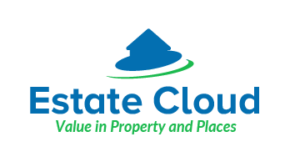
A survey done by the Centre for Affordable Housing in Africa in 2016, has revealed the variations in the prices, rent and financing of housing in East Africa. In one part, the annual survey sought to assess the level of spending on housing for ten East African economies including Kenya, Uganda, Tanzania, Rwanda, Burundi, Ethiopia, Eritrea, Djibouti, Somalia and Comoros. The responses were classified to reflect the capacity of various income groups; low-income, middle-income and high income, to buy or rent a house.
According to the survey, Uganda has the highest cost of buying a low-income house at $10,000 while Kenya has the lowest cost at $1,000. For middle-income houses, costs were highest in Comoros at $131,000 followed by Tanzania where it costs $90,000 for the same. Ethiopia had the lowest cost in this group at $11,000 followed by Kenya where it cost $17,000. In the high income segment, Kenya had the highest house costs in the region at $750,000. This was more than 50 times the cost of housing for the same category in Ethiopia where the cost of a high income house was just $15,000, a very profound difference. Even more astounding was the difference between the cost of a middle-income house in Kenya, $15,000, and that of a high income house
The survey also asked respondents questions about the cost to rent. The findings were that the cost to rent a low-income house was lowest in Tanzania at $26 followed by Kenya’s $35 while Uganda, Rwanda and Burundi had the highest rent at $80 each. Renting middle-income houses was a most expensive affair in Comoros where it cost $1000 for rent whereas Kenya had the cheapest rental rates for that group at $150. In Uganda, it cost $500 while in Tanzania it cost $183 to rent a middle-income house.
Renting a high income house was cheapest in Rwanda where $600 would suffice, followed by Djibouti where you would set up base in a leafy suburb at $975. On the higher end, it cost $5750 to rent a high-end apartment in Tanzania while in Kenya it costs $2500.
Further, the survey collected information on the common mode of financing and delivery of housing among the three income groups. Low income groups were found to finance their houses through savings, donations, family loans and micro-finance and delivery was through self-built housing, incremental building, government means and community assistance. The middle-income groups were found to finance their houses through mortgages, savings, subsidies, loans and savings and credit societies. Delivery was through government, private developers, self-built houses and incremental mechanisms.
For the high income groups, financing was through mortgage, cash & credit, savings and loans. Delivery was through local developers, international developers, self-built housing and purchase. Interest rates, housing supply, supporting infrastructure, access to finance, affordability and mortgage markets are some of the factors that influence rental and house prices in the region.
All factors held constant, the lesson is clear as to which investment plan to pursue, whether for rent or for sale and the countries to consider.













